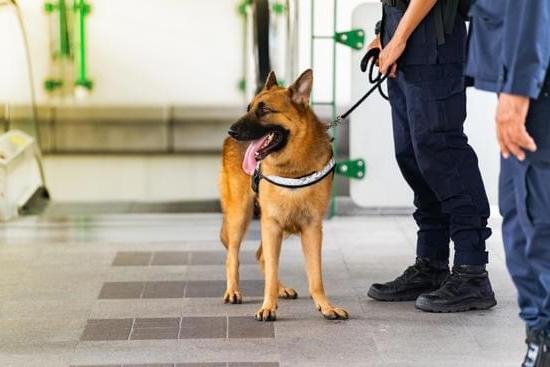Dogs are den animals and love having a designated space to call their own. A crate can provide this space for your dog and can also be a great training tool.
When you first bring your dog home, put their crate in a central location in your house. This will help your dog feel like part of the family and will make crate training much easier.
Some tips for crate training:
-Make the crate a happy place by putting a soft blanket and some toys in there.
-Don’t use the crate as a punishment.
-Start with short periods of time and gradually increase the amount of time your dog spends in the crate.
-If your dog is having trouble adjusting to the crate, start by feeding them in the crate and then gradually move the food outside of the crate.
-If your dog barks or whines in the crate, don’t give them attention. This will only reinforce the behavior.
Crate Training A Young Dog
The first rule of crate training is to never use the crate as a punishment tool. If your dog associates the crate with negative experiences, he will likely be hesitant to enter it in the future.
The crate should be seen as a positive place for your dog to relax and rest. Start by placing some treats and toys in the crate to make it more inviting.
Once your dog is comfortable with entering the crate, begin by closing the door for a few seconds at a time. Gradually increase the amount of time the door is closed.
If your dog starts to whine or bark, don’t open the door until he settles down. This will help him learn that whining and barking will not get him out of the crate.
The key to successful crate training is to be patient and consistent. It may take a little time, but eventually your dog will learn to love spending time in his crate.
How To Properly Crate Train A Dog
The purpose of crate training is to provide a den-like atmosphere for your dog where he can feel secure and safe. When done properly, crate training can be an effective tool in housebreaking a dog, and can also be used as a means of managing a dog’s behavior.
The first step in crate training is to introduce your dog to the crate. Place the crate in a quiet, comfortable location in your home and put a soft blanket or towel in the crate. Allow your dog to explore the crate on his own. Do not force your dog into the crate, and do not try to close the door on him. Once your dog is comfortable with the crate, you can begin to use it as a training tool.
Whenever you are home, allow your dog to remain in the crate. If you need to leave the house, put your dog in the crate and leave him there for a short period of time. Gradually increase the amount of time your dog spends in the crate. If your dog starts to whine or bark while in the crate, do not release him. Wait until he is quiet before letting him out.
If you are using the crate to housebreak your dog, put him in the crate whenever you can’t watch him. After he has eliminated outdoors, praise him and give him a treat. As your dog becomes housebroken, you can gradually lengthen the amount of time he spends in the crate.
The key to successful crate training is to be consistent and patient. Crate training can be a slow process, but it is well worth the effort. With patience and persistence, you can crate train your dog to become a well-behaved and happy member of your family.
Can You Crate Train A 7 Month Old Dog
The answer to this question is a resounding yes! You can crate train a 7-month-old dog. In fact, crate training is an excellent way to help your dog learn appropriate behavior and can be an invaluable tool for house training.
The key to success with crate training is to make the crate a positive place for your dog. You should always praise your dog when he or she enters the crate and offer a treat or toy. You should never force your dog into the crate or use the crate as a form of punishment.
To crate train your dog, begin by placing the crate in a quiet, safe place in your home. Place a blanket or towel in the crate and put your dog’s food and water bowls inside. At first, leave the door to the crate open and let your dog wander in and out as he or she pleases. As your dog becomes more comfortable with the crate, you can begin to close the door for short periods of time. Gradually increase the amount of time your dog spends in the crate.
The key to successful crate training is to be patient and to take things slow. If your dog seems anxious or uncomfortable in the crate, slow down the process and give your dog more time to adjust. With patience and persistence, you can crate train your 7-month-old dog.
Crate Training With Another Dog In The House
If you are crate training a new dog and already have another dog in the house, you will need to take some extra precautions. The new dog should always be supervised when out of the crate, especially if the other dog is food aggressive. You will also need to keep the dogs’ food and water bowls separate to avoid any fights over food.
It is also important to keep the dogs’ areas of the house separate. This can be done by using baby gates or crating the dogs in different parts of the house. This will help keep the dogs from fighting and will help them to get used to having their own space.
If you are having trouble with the dogs fighting, it is best to consult with a professional trainer to help you correct the behavior.

Welcome to the blog! I am a professional dog trainer and have been working with dogs for many years. In this blog, I will be discussing various topics related to dog training, including tips, tricks, and advice. I hope you find this information helpful and informative. Thanks for reading!





